Free TIFF to WEBP Online Converter
Easily convert TIFF images to WEBP format with our free online converter, perfectly optimized for your upload needs. Get instant delivery with a ready-to-use CDN link generated immediately after conversion.
Add a File Converter to your app
Get a free API key and start converting your TIFF images to WEBP
Frequently Asked Questions
What is TIFF?
TIFF stands for Tagged Image File Format. It’s a widely-used file format for storing raster graphics and image information. Here are some key points about TIFF:
- High Quality: TIFF files are known for their high-quality image storage, making them popular among photographers, graphic designers, and the publishing industry.
- Lossless Compression: They use a lossless form of compression, which means they retain all the original image data without losing quality.
- Flexibility: TIFF files can store multiple layers and pages, and they support various color spaces, including grayscale, RGB, and CMYK.
- Compatibility: They are compatible with many different operating systems and software applications, including Adobe Photoshop and other image editing tools.
Large File Size: Due to their high quality and lossless nature, TIFF files tend to be larger in size compared to other image formats like JPEG.
What is WEBP?
WEBP is an image file format developed by Google, designed to reduce the size of images without sacrificing quality. Here are some key points about WEBP:
- Compression: WEBP supports both lossy and lossless compression. Lossy compression reduces file size by removing some image data, while lossless compression retains all image data.
- Efficiency: WEBP images are typically smaller than JPEG and PNG images, which helps web pages load faster and use less bandwidth.
- Features: The format supports animation, transparency (alpha channel), and metadata such as ICC profiles, XMP, and EXIF.
- Compatibility: Most modern web browsers, including Chrome, Firefox, Edge, and Opera, support WEBP. Many image editing tools also support it, either natively or through plugins.
WEBP is commonly used for web graphics, where reducing file size without compromising quality is crucial for performance and user experience.
What are the benefits of using WEBP over TIFF?
Using WEBP over TIFF offers several benefits, especially in web and digital applications. Here are some key advantages:
- Smaller File Sizes: WEBP images are significantly smaller than TIFF images due to their efficient compression algorithms. This helps reduce storage space and bandwidth usage.
- Faster Loading Times: Smaller file sizes mean faster loading times for web pages, which can improve user experience and SEO rankings.
- Versatility: WEBP supports both lossy and lossless compression, as well as transparency and animation, making it a versatile choice for various types of images.
- Browser Compatibility: Most modern web browsers, including Chrome, Firefox, Edge, and Opera, support WEBP, making it a web-friendly format.
- Performance: WEBP’s efficient compression can enhance the performance of websites and applications by reducing the time it takes to load images.
However, it’s important to note that TIFF is still preferred for high-quality image preservation, professional photography, and printing due to its lossless nature and ability to store multiple layers and pages.
How can I convert TIFF to WEBP using Filestack image transformation API?
To convert a TIFF file to WEBP using the Filestack image transformation API, you can follow these steps:
- Sign Up and Get Your API Key: First, sign up for a Filestack account and obtain your API key.
- Upload the TIFF File: Use the Filestack Upload API or File Picker tool to upload your TIFF file. This will give you a Filestack handle for the file.
Apply the Conversion Task: Use the Filestack transformation API to convert the TIFF file to WEBP. You can do this by adding the output conversion task to the file URL.
https://cdn.filestackcontent.com/output=format:webp/handle
How can I change the color space profile of the generated WEBP when converted from TIFF?
Filestack’s image transformation API enables users to specify the output file’s color space by including the “colorspace” parameter in the “output” conversion task.
https://cdn.filestackcontent.com/output=format:webp,colorspace:cmyk/handle
Supported Cloud Storage Providers

Why Use File Converters?
Stop worrying about file compatibility slowing your team down. Filestack’s advanced conversion features make document sharing effortless by quickly converting TIFF into WEBPs. Preserve every detail of your original content, ensuring smooth collaboration and boosting your team’s productivity.
What Filestack Can Provide For You
GROUP IMAGES INTO A COLLAGE
URL SCREENSHOT
PDF FILE PROCESSING
DOCUMENT DETECTION
VIRUS SCAN & MALWARE DETECTION
GENERATE A QR CODE
Let’s Get Started.
Just One Integration, One Time…
import * as filestack from 'filestack-js';
const client = filestack.init('YOUR API KEY');
client.upload(fileObject).then(data =>console.log(data.url));gem 'filestack'
client = FilestackClient.new('YOUR_API_KEY', security: security_object)
filelink = client.upload(filepath: '/path/to/file')$ composer require --prefer-dist filestack/filestack-php
use Filestack\\FilestackClient;
$client = new FilestackClient('YOUR_API_KEY');
$filelink = $client-upload('/path/to/file');$ pip install filestack-python
from filestack import Client client = Client("")
params = {'mimetype': 'image/png'}
new_filelink = client.upload(filepath="path/to/file", params=params)
print(new_filelink.url)